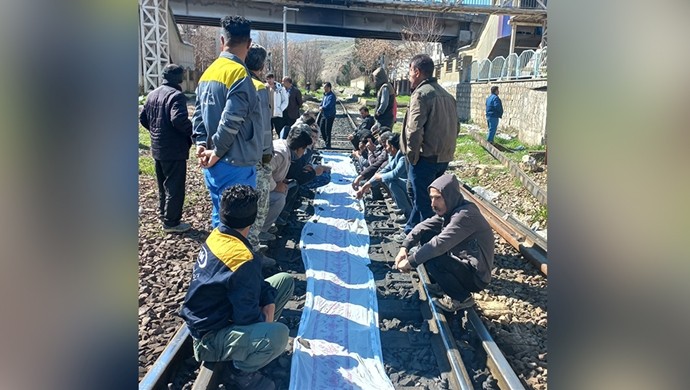In his Nowruz message, Iranian regime president Ebrahim Raisi referred to the Persian year 1402 (March 2023-March 2024) as a year of ups and downs accompanied by bitter and sweet events. He added, “However, as a result of the events of the year, there was more growth and prosperity in dear Iran in all sectors. Iranian regime supreme leader Ali Khamenei named the year 1402 as a year of production growth and inflation control. The government’s efforts were concentrated on achieving this slogan. The overall economic growth in 1402, according to the estimates of the Statistical Center, will be at least 6 percent. It has now been three consecutive years that the country has experienced growth rates above 4 percent.”
In breaking his record of making false statements, Raisi asserts that he has established a new economic framework in which, despite prices skyrocketing day by day, inflation is decreasing. Furthermore, while production has virtually vanished in all areas, this economic framework supposedly demonstrates growth of 6 percent or more.
Regardless of what Raisi says, it is the newspapers and regime spokespeople who bear witness to the bitter economic realities beyond imagination that have occurred in the past year.
On April 6, 2023, the state-run Mardomsalari news website wrote, “The poverty line is 150 million rials.”
On March 15, the official ILNA news agency quoted one of the regime’s spokespeople as saying, “If they calculate correctly and consider the real share of items such as housing and education, the real cost of the living basket is definitely 300 million rials or even higher.”
In April 2023, the state-run Shargh newspaper reported a staggering unemployment rate of over 40 percent and an inflation rate of over 50 percent.
Shargh also added, “Iran’s highest unemployment rate in 2023 ranks 19th among 157 countries in the world.”
Indeed, in the past year, all Iranians, except for a few percent of the population who are regime loyalists, have fallen into poverty. According to regime newspapers, among them, 60 million people (the sixth decile) from the lowest strata of society have fallen below the poverty line, and 30 million people have even fallen below the survival line.
With exorbitant prices, workers not only cannot afford new clothes for themselves and their children but are even unable to add a little color and fragrance to their meager holiday tables.
The reason for this widespread poverty and misery can be seen in the statistics and figures presented in the macroeconomy.
On March 16, the state-run Setareh Sobh newspaper quoted Abdolnaser Hemmati, the former head of the Central Bank, as saying, “Based on estimates during the two years of the 13th government, money printing has increased by 83 percent, liquidity by 72 percent, the dollar by 97 percent, gold coins by 162 percent, and the price index by 114 percent.”
Setareh Sobh added, “This article was published on August 3, 2023. After that, the price of the dollar went up to the threshold of 600,000 rials, and the price of gold coins reached the threshold of 370 million rials. When the price of the dollar and gold coins rises, it affects the prices of other goods and reduces the purchasing power of individuals with fixed or low incomes.”
Inflation in food items is higher than the average inflation rate. On March 11, Setareh Sobh wrote, “The prices of fruits and vegetables have increased by 100 to 200 percent over the past two years, and the prices of white and red meat have also increased more than four times compared to the summer of 2021.”
On March 15, Entekhab news website published comments from Hemmati on the triple-digit inflation affecting everyday necessities such as meat, chicken, and dairy products.
Beside addressing Raisi, whose election slogan was “Strong Iran,” Hemmati has said, “The decline in people’s purchasing power, despite being the world’s top holder of oil and gas resources, the increase of over 30 percent of the population falling below the poverty line, a significant gap in terms of gross domestic product and economic power compared to regional competitors, the worsening rank of corruption and the business environment… Which of these indicators demonstrates the government’s efforts to shape a strong Iran?”
The crushing pressure of this economic situation falls on the weakest segments of society, which constitute the vast majority, around 70-80 percent, of the Iranian population. They are the majority who, according to government media, are acknowledged to be living below the absolute poverty line, with 30 percent of them falling into this category. They are the ones who lack the purchasing power even to afford necessities such as bread and must rely on rationed or installment purchases.
From a regime that from the very first day of coming into power has thrived on murder, crime, theft, and the destruction of the heritage and future of the country, from a regime that callously kills youth and spends the people’s resources on warmongering, it is easy to see that it is teetering on the edge of collapse. It has failed to address the escalating crises both internally and externally that Iran faces. This regime has left no solution for the people except for overthrowing it, which is the demand of the entire Iranian nation.





